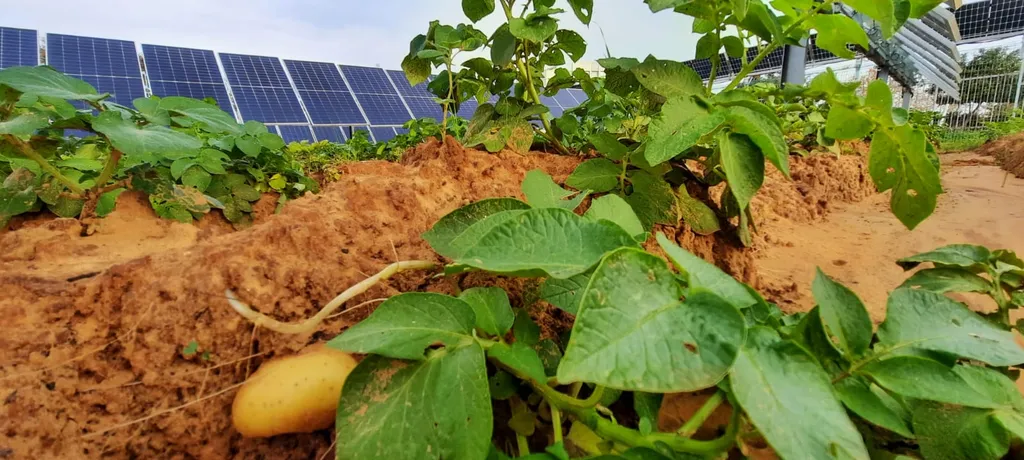In the heart of Iraq, a groundbreaking study led by Israa M. T. Witwit from the Department of Soil and Water Resource at Al-Qasim Green University is reshaping our understanding of sustainable agriculture and energy production. The research, published in the journal ‘Frontiers in Horticulture’ (translated to ‘Frontiers in Horticulture’), explores the intricate dance between solar energy and crop cultivation, offering promising insights for the future of agrivoltaic systems.
Agrivoltaic systems, which combine agriculture and photovoltaic panels, are gaining traction as a means to optimize land use and improve resource efficiency. Witwit’s study delves into the effects of these systems on potato plants, examining how different light conditions, irrigation levels, and fertilizer applications influence yield, water productivity, and nutrient content.
The findings are compelling. Light conditions emerged as the most significant factor, overshadowing the impact of irrigation and fertilizers. “The results show that light conditions are the most important factor (more so than irrigation or fertilizers),” Witwit explains. Potato yields were notably higher in partially shaded areas between solar panels, with total yields reaching over 17 tons per hectare under optimal conditions. In contrast, yields in fully shaded areas were significantly lower, highlighting the delicate balance between shade and sunlight.
Water productivity also varied significantly across different light conditions. Plants in partial shade and light conditions demonstrated higher water productivity compared to those in full shade. This suggests that agrivoltaic systems can enhance water use efficiency, a critical consideration in regions facing water scarcity.
The study also revealed intriguing insights into soil nutrient dynamics. The combination of full shade, 35% irrigation deficit, and low potassium levels was found to enhance available phosphorus and decrease potassium concentrations in the soil. This discovery opens new avenues for research into sustainable farming practices that can support healthier soil nutrient dynamics.
The commercial implications for the energy sector are substantial. Agrivoltaic systems offer a dual-purpose solution that can generate renewable energy while simultaneously supporting agricultural production. This integrated approach can optimize land use, reduce water consumption, and enhance overall productivity, making it an attractive proposition for investors and policymakers alike.
As the world grapples with the challenges of climate change and resource depletion, innovative solutions like agrivoltaic systems are crucial. Witwit’s research provides a solid foundation for further exploration and development in this field. By harnessing the synergy between agriculture and renewable energy, we can pave the way for a more sustainable and resilient future.
The study, published in ‘Frontiers in Horticulture’ (translated to ‘Frontiers in Horticulture’), is a testament to the power of interdisciplinary research and the potential of agrivoltaic systems to revolutionize the way we think about energy and agriculture. As we look to the future, the insights gained from this research will undoubtedly shape the development of more efficient and sustainable farming practices, benefiting both the energy sector and the environment.

